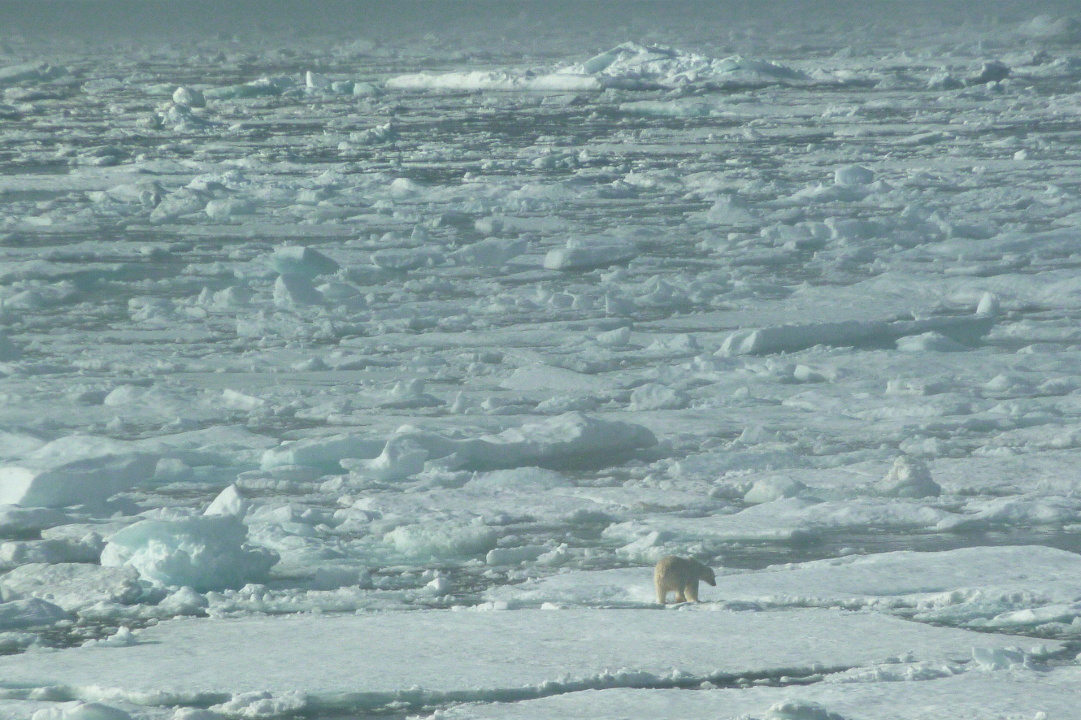My adrenaline level zoomed when I saw our luggage zooming for shore at full speed, piled high on zodiacs. Fortunately the weather was benign today, and everything and everyone made it to dry land.
We had some time in Iqaluit before our charter flight to Ottawa. The Unikkaarvik Visitor has many displays of Arctic life and artifacts; this polar bear is in a diorama.
These walrus carvings are made of whalebone.
A walrus.
The dancing polar bear sports this explanatory legend.
The bear himself was difficult to photograph because of the multiple reflections bouncing around his display box. But I had to include this anyway.
And I love seeing the world-view encapsulated in this Inuit seasonal calendar (click to enlarge).
The raven came first.
Joan and I then visited the Nunatta Sunakkutaangit Museum next door, but we were running out of time. Joan purchased a pair of earrings, beluga whales carved out of musk ox horn, at the museum gift shop.
The bus was preparing to leave for the airport, so we were fortunate that the attendant allowed us to throw cash on the counter and run.
At the airport the guests identified their luggage outside the bus, and made certain that all their luggage was there. Then it was time to amuse ourselves in the small airport, waiting for the charter flight of arriving guests to land, and be serviced and refueled before we could board for Ottawa. We would fly over the entire length of Quebec from north to south:
Ottawa, whose location was vague to us before this trip, straddles on the border between Ontario and Quebec.
Our plane taxied to the charter corner of the Ottawa airport, where we boarded buses to take us to our hotel, the Fairmont Chateau Laurier. This elegant limestone structure, opened in 1912, is located in the center of downtown, close to the National Gallery, riverside paths, the Canadian History Museum, the Library of Parliament, and the Parliament Building. After dinner, Joan and I took an extended stroll exploring a section of the riverfront, past the Peace Monument and around the Parliament. A crowd was gathering for a light-and-sound show to be projected onto the front of Parliament, but it wasn't going to start until later, and Joan and I needed to be up early the next day for our flight to Toronto and then home. We were impressed by Ottawa, even though we saw very little of it, and decided it would be a worthwhile destination in the future.
In the morning the bus to take the early round of guests to the airport became lost on its way to the hotel, but we were bundled into taxis and made it to the airport in good time. The transfer in Toronto to our Columbus flight was interesting; the Ottawa-Toronto leg was a domestic Canadian flight, so we passed through U.S. customs, passport control, and security in Toronto. The luggage transfer was absolutely painless: picking up and then dropping off the luggage again wasn't necessary. There was a large waiting hall in front of the U.S. security lines, with large monitors. You simply waited for your name to appear on the monitor, and when it did you did you were free to enter the line. We never had to touch our luggage in Toronto. Wonderful!
We arrived back in Columbus on time, after three and a half weeks of exploration. The Arctic Journey had been stunning in its beauty, full of history, and packed with wildlife. Now being back home was wonderful too.





































































